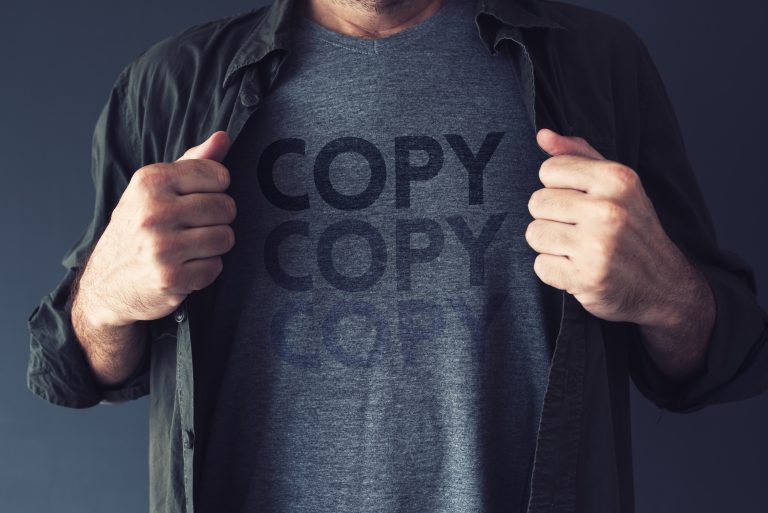Have you assigned students tasks only to receive responses that they have regurgitated from the Internet?
I get frustrated and annoyed when I give simple assignments only to receive regurgitated information, because students are not using their critical thinking skills and are discounting their knowledge and experiences. In essence, they are minimizing their voices and intellect.
Students have always copied from each other, but over the last few years I have seen an increase in plagiarism. This is likely because students now have one-to-one electronic devices to use for their school work. Information is more accessible and it is easier to copy and paste. In the past, I could easily find the websites that students used if I suspected plagiarism. Now strategic plagiarizers make it hard for teachers to find their sources. This article at Teachthought.com, gives us some insight on the new technology that students use to facilitate almost undetectable plagiarism.
Regardless of new ways to mask plagiarism, some teachers are keen on detecting it. Based on a student’s performance on other written assignments, they can tell that the produced work is not the student’s original words. Unfortunately, proving this beyond reasonable doubt can be challenging. Some teachers hesitate to make direct accusations and follow through on harsh consequences because they do not want to accuse someone wrongly or indict them without hard proof. If I suspect plagiarism but cannot find the origin, I often write comments like, “Are these your words?” or “Make sure to cite information that you get from other sources.” If I find the sources, I will copy the links and share them with the person who plagiarized. I then give a failing grade for the assignment and a warning about why plagiarism is wrong. As educators, we may also feel the need to consider the other variables for plagiarism (de Maio et al., 2020). These factors could include language barriers, thoughtlessness, unintentional omissions, inadequate academic skills, and lack of knowledge about what constitutes plagiarism.
Plagiarism can have far-reaching effects, but the most obvious is the impact on the students themselves. The first consequence I identify as a teacher is that the students who are plagiarizing are not developing the skills that the assignments require them to use and develop. Students stunt their academic growth when they plagiarize as well as learn how to deceive others. Stunting their academic growth and learning to deceive have both long-term and short-term consequences for the student and the wider community.
Though the presented issue of plagiarism is in a public school setting, as teachers who are Christians, we are not only concerned about the academic implications; we care about students’ overall well-being, including their spiritual health. Though we may have some limits on how we communicate the gospel, we can still teach morals. One relevant biblical principle is that we should train children well, so that when they become adults, they will have a good foundation (Proverbs 22:6). Integrity is another biblical principle that non-believers can appreciate. The Scriptures encourage us to be people of integrity (Philippians 4:8; Proverbs 10:9) and direct us to live in ways that both God and man can appreciate (Acts 24:16; 2 Corinthians 8:21). Therefore, we must advocate for high levels of integrity in our schools. In particular, Christian educators should be examples of integrity, whether or not our schools and school systems promote integrity.
To help solve this problem of plagiarism we must think creatively and help our schools foster an environment of academic integrity. Join me in encouraging our school communities to address this academic and ethical dilemma. These are some suggestions that I have for us to move forward in building stronger students with high academic integrity:
- Discuss this problem with the principal and collaborate to devise a school-wide campaign about academic integrity. All teachers and administrators must understand and follow the protocols to help students increase academic integrity in order for this to be effective. (Vehviläinen et al., 2018).
- Creative videos could be shown in advisories, study halls, homerooms, etc.
- All teachers could embed this message regularly in their classes.
- Messaging about plagiarism, honesty, and integrity could be reinforced on bulletin boards and posters throughout the school.
- Students need to be taught the difference between using sources for references and plagiarism. Though a curriculum on plagiarism is usually taught in English classes, these concepts need to be reinforced in other content areas. More information on how to teach about plagiarism can be found at https://www.plagiarism.org/teaching-about-plagiarism.
- A curriculum for the juniors and seniors could include a tutorial and certificate requirement. Indiana University has a web page dedicated to recognizing and avoiding plagiarism that we could utilize. Students can also register for a tutorial and certificate about avoiding plagiarism at https://plagiarism.iu.edu/register.html.
- Schools need to provide plagiarism detection software for teachers. Plagiarism detection software makes it easier to detect plagiarism (Vehviläinen et al., 2018). Students have become more creative in how they plagiarize, making it more challenging to verify suspicion of plagiarism through a simple Google search.
These are only a few suggestions, but I hope they spark more creativity and ingenuity in each of us as we work to build our students up academically and ethically.
References:
de Maio, C., Dixon, K., & Yeo, S. (2020). Responding to Student Plagiarism in Western Australian
Universities: The Disconnect Between Policy and Academic Staff. Journal of Higher Education
Policy and Management, 42(1), 102–116. https://doi.org/10.1080/1360080X.2019.1662927
Vehviläinen Sanna, Löfström Erika, & Nevgi, A. (2018). Dealing with Plagiarism in the Academic
Community: Emotional Engagement and Moral Distress. Higher Education: The International
Journal of Higher Education Research, 75(1), 1–18. https://doi.org/10.1007/s10734-017-0112-6


